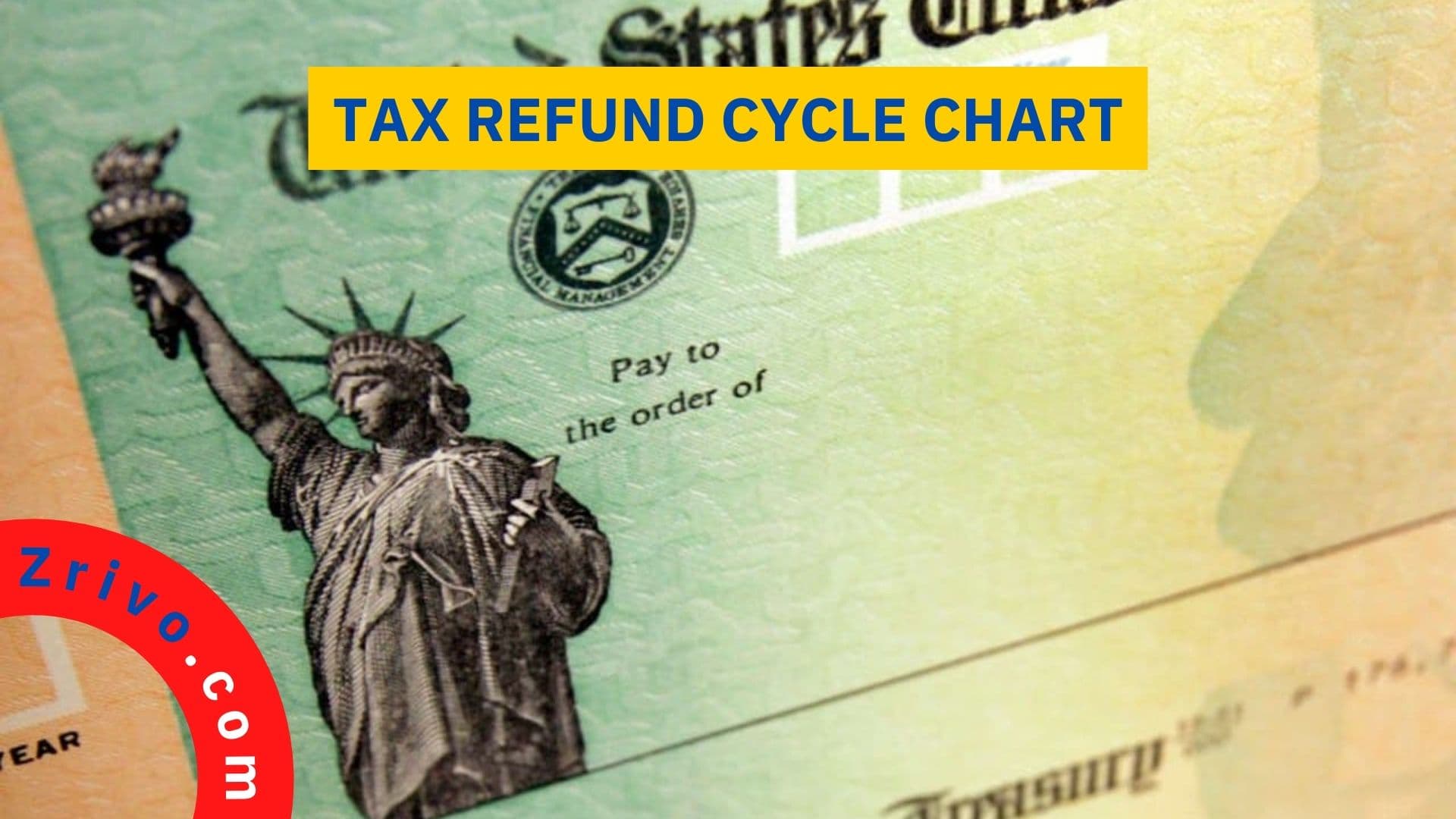Tax Refund Cycle Chart 2023 - 2024
The tax refund cycle can be confusing if you aren't sure what to expect, and this article will help you understand how the IRS tax refund cycle works.

Typically, you can receive your refund within a few weeks of filing your return if you file electronically and choose direct deposit. But if you file a paper return, it may take longer to process. This is especially true if you’re filing with a refundable credit, such as the Earned Income Credit or Child Tax Credit. These tax credits can reduce your taxes by as much as 50%.
But there’s a big catch to these tax credits: they’re usually only available for the first six months of the year. This means it could be lower than expected if you’re expecting a tax refund in 2023. One of the main reasons for this is that many tax credits are ending in 2023. These include the popular child tax credit expansion and the stimulus payments that were offered by certain states to help people cope with the COVID pandemic in 2021.
So, if you’re expecting a tax return in 2023, it’s best to file your return as soon as possible. If you miss the deadline, you’ll have to pay late-filing penalties and interest. Fortunately, the IRS is making it easier for taxpayers to determine when their tax refunds will arrive. It recently published an estimated tax refund schedule based on previous years. This chart includes a week-by-week breakdown of when the IRS should accept and process tax returns. It also shows estimated refund payment dates based on your IRS cycle code.
Note that these are estimates, and you should never rely on them. You should always check your IRS transcript to see when your refund was paid. It’s also important to know that the dates in this chart are just a general estimate and could be extended by many factors, such as mandated PATH (lifted on February 16), additional identity fraud/security checks, special handling, or IRS agent manual reviews.
According to new data from the IRS, the average federal tax refund was a good deal smaller in 2023 than it was a year ago. The decline resulted from several factors, including the expiration of some pandemic-related tax credits, such as the expansion of child tax credit and the stimulus payments that states gave to people. Here is the Tax Refund Cycle Chart 2023 - 2024 The IRS Accepts Your Return Your refund is direct-deposited by this date Your refund check mail date January 27 February 7 February 14 February 3 February 14 February 21 February 10 February 21 February 28 February 18 February 28 March 6 February 24 March 6 March 13 March 2 March 13 March 20 March 9 March 20 March 27 March 16 March 27 April 3 March 23 April 3 April 10 March 30 April 10 April 17 April 6 April 17 April 24 April 13 April 24 May 1 April 20 May 1 May 8
Tax Refund Status
The IRS’s tax refund cycle allows taxpayers to track the status of their tax returns as they move through the process. This tool can be used online or via the IRS2Go mobile app. Input your Social Security number, filing status, and expected refund amount, and you can check the refund status online.
A few factors can impact the timing of your tax refund, such as when you file your taxes and whether or not you request a direct deposit. Usually, you can expect your federal tax refund to be deposited into your bank account within 21 days of filing.
When you e-file, the IRS starts tracking your return and updating your status on their website within 24 hours. However, if you filed by mail, your refund status can take longer to update because you will have to manually wait for the IRS to enter your tax return into their system.
If you want to check the status of your federal tax refund, visit Where’s My Refund and enter your Social Security number, filing status, and estimated refund amount. Then you can see when your refund will be available for a direct deposit or paper check.
Sometimes, the IRS may contact you by mail for additional information or verification of your return. Responding to these communications can improve your refund status and help you receive your money faster.
Another factor that can impact the timing of your tax refund is how quickly you submit any corrections to your return. It can take up to five weeks for the IRS to correct errors that you made on your tax return.
A third factor that can slow down your refund is if the IRS offsets some of your refund to cover debts you owe other federal agencies. This type of offset can delay your refund for up to seven weeks.
A knowledgeable tax pro can help you avoid delays in your refund. They can review your tax return for errors and ensure you’re claiming all your earned income and credits.
How Does the IRS Tax Refund Cycle Work?
Generally speaking, you can expect to receive your tax refund within two weeks after e-filing and three weeks when you request a paper check in the mail. However, you can do a few things to speed up the process.
First, be sure to check your IRS transcript for a special eight-digit code called the “cycle code“. This will tell you when your tax return entered the master file and if it’s in a daily or weekly batch cycle.
If you see an eight-digit number like 20220602, it means that your tax return was uploaded to the master file on the sixth calendar week of the year. This date will be combined with your tax transcript’s cycle code to determine if you are in a daily or weekly batch cycle and when the update of your transcript will occur.
Once you know when your tax return was uploaded to the master file, you can use this information to determine if your refund will be direct deposited into your bank account or mailed to your home. You can also check the status of your refund using the IRS’s online Where’s My Refund tool, which will give you a clear picture of your refund’s progress.
A refund can be a major windfall, and many people are eager to use it. But it is important to be smart about how you spend the money.
Another factor that may impact your refund is whether you claim certain tax credits. For example, the Earned Income Tax Credit (EITC) or Additional Child Tax Credits may cause delays in your refund.
The Protecting Americans from Tax Hikes (PATH) Act requires the IRS to hold tax returns with claims for these credits until February 15. Your refund may not be processed for a few more weeks.





